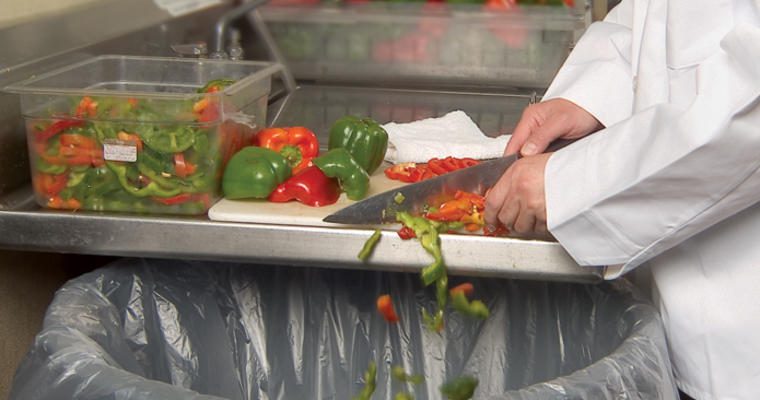In 2013, the federal government launched the U.S. Food Waste Challenge, calling on every member of the food chain to help reduce the estimated 30 percent to 40 percent of food that gets thrown in the trash every year. Since then, a number of states and municipalities have joined the fight against food waste, enacting food-waste initiatives.
Food waste is a big issue for healthcare operations because they produce so much of it. Healthier Hospitals Initiative, a sustainability advocate for the healthcare sector, estimates that hospitals and health systems in the U.S. produce 11.7 thousand tons of waste each day. Roughly 10 percent of that is food in the typical hospital, according to Sustainability Roadmap for Hospitals, a program of the American Hospital Association. Throwing away food squanders agricultural resources and increases greenhouse gas emissions from landfills. It’s also a tremendous drain on your budget, wasting money you could put to good use elsewhere.
Ideas to Reduce Food Waste in Your Operation
Tracking Your Performance
You can’t manage what you don’t measure, says Andrew Shakman, CEO of LeanPath, a Portland, Oregon-based food-waste prevention consultancy. LeanPath offers an automated system that measures the food that gets thrown away every day.
“Most operations throw away 4 to 10 percent of the food they order before it even reaches a plate,” Shakman says. LeanPath helps staff record all food headed for the trash and displays its estimated value. “That focuses employee attention on the problem and lays the groundwork for waste-prevention strategies.”
Tim Renner, Director of Culinary Services and Executive Chef for BMA Management, which operates 40 assisted living communities in Illinois, agrees employee buy-in is key to waste prevention. “Our managers and staff just weren’t aware they were wasting so much food,” he says. So he devised his own paper-based system to highlight the problem and motivate behavior changes. “We use ‘waste logs’ to record food waste. Employees have to record everything that gets thrown away—and a dollar amount is attached to each item.”
Minimize Overproduction
It’s important to standardize your recipes and quantify them to the right yields and you want to be sure you’re purchasing the right product for the right use. Over time, Renner’s waste logs helped staff more accurately gauge the food needed to cover each meal and encouraged them to reuse leftovers in creative ways.
Use as much of the product as possible. Product trim can be a significant source of waste. Train kitchen staff to be deliberate with their cuts so they don’t throw away usable product. You also may consider using value-added, ready-to-use ingredients, such as bagged produce, which eliminate trim waste.
Cross-utilization is another way of getting the most value out of a product. For instance, you might serve prime rib as an entrée and also use it thinly shaved for sandwiches and salads. By increasing the number of items in which products are used—especially highly perishable items such as produce and seafood—you will minimize waste.
Similarly, leftovers can be utilized in dishes the next day. “Leftover broccoli,” Renner says, “will go into a pesto sauce, and leftover burgers can be broken into a hearty spaghetti sauce.”
Use product before it’s outdated. Proper inventory, stock monitoring, and rotation policies are critical to preventing spoilage and expiration-date losses.
How Much Food Are Your Guests Leaving on Their Plates?
Renner’s staff uses plate-waste logs to track this postconsumer waste. Too much food left on the plate may mean your menus aren’t meeting the needs of those you serve, that your portions are too large, or that your staff needs a refresher course in portioning standards.
Consider implementing a “waste-awareness drive” to highlight the plate-waste issue for staff and customers— and allow customers to request smaller portions if they desire, as Renner has. Prevention pays off. Shakman says the typical LeanPath operation shaves two to four percent off its annual food costs. Renner reports that one of his communities cut its food waste in half, capturing substantial savings that were invested back into its program.
Reuse Food Waste
You can’t eliminate food waste entirely, of course. But there are better ways of handling food waste than sending it to a landfill. The EPA recommends these options, in order of sustainable preference:
- Feed people. Donate nonperishable and unspoiled perishable food to local food banks, pantries, and shelters.
- Feed animals. Divert food to farmers, zoos, and other animal-feeding operations.
- Supply industry. Liquid fats and solid meats can be converted to animal food, cosmetics, soap, and other products. Fats, oils, and grease can be transformed into biofuel.
- Compost. Food waste can be combined with other organic materials to create compost, which is used as a soil amendment or a medium to grow plants.
- Anaerobically digest. Specially equipped facilities can recycle food waste through a process that produces biogas and a soil amendment, two valuable products.
Some of these options may not be available to you locally. But identify the resources that are and work with them to determine whether you can meet their requirements. Alternatively, you might blaze your own waste-reuse trail; some healthcare operations are installing grinder systems to create their own compost and using it around their campuses.
Whatever you do, you’ll be benefiting the planet and your bottom line.
Want to learn more about fighting food waste? Listen to our podcast on food waste, Eliminate the Elephant in the Kitchen.




























